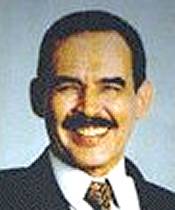The Chinguetti oilfield is an oil field located off the Mauritanian coast in 800 m water depth. It was discovered by the Australian firm Woodside Petroleum in 2001. It is named after the city of Chinguetti.

Mauritania is a country in Northwest Africa. It is the eleventh largest sovereign state in Africa and is bordered by the Atlantic Ocean to the west, Western Sahara to the north and northwest, Algeria to the northeast, Mali to the east and southeast, and Senegal to the southwest.

Australia, officially the Commonwealth of Australia, is a sovereign country comprising the mainland of the Australian continent, the island of Tasmania and numerous smaller islands. It is the largest country in Oceania and the world's sixth-largest country by total area. The neighbouring countries are Papua New Guinea, Indonesia and East Timor to the north; the Solomon Islands and Vanuatu to the north-east; and New Zealand to the south-east. The population of 25 million is highly urbanised and heavily concentrated on the eastern seaboard. Australia's capital is Canberra, and its largest city is Sydney. The country's other major metropolitan areas are Melbourne, Brisbane, Perth and Adelaide.
Relatively modest in size, originally estimated at 123 million barrels (19,600,000 m3), this deposit is nonetheless significant as the first commercial discovery of oil in the country, opening a new region for offshore petroleum exploration. Production of 75,000 barrels per day (11,900 m3/d) began in 2006 via an FPSO. Production declined rapidly after the start of production due to geological complexity. In November 2006 Woodside issued a statement cutting the field's 2P reserves to 53 million barrels (8,400,000 m3). Woodside expect production of 20,000 barrels per day (3,200 m3/d) to 30,000 barrels per day (4,800 m3/d) in the next few years. reference

A floating production storage and offloading (FPSO) unit is a floating vessel used by the offshore oil and gas industry for the production and processing of hydrocarbons, and for the storage of oil. A FPSO vessel is designed to receive hydrocarbons produced by itself or from nearby platforms or subsea template, process them, and store oil until it can be offloaded onto a tanker or, less frequently, transported through a pipeline. FPSOs are preferred in frontier offshore regions as they are easy to install, and do not require a local pipeline infrastructure to export oil. FPSOs can be a conversion of an oil tanker or can be a vessel built specially for the application. A vessel used only to store oil is referred to as a floating storage and offloading (FSO) vessel.
Woodside Energy is an Australian petroleum exploration and production company. Woodside is the largest operator of oil and gas production in Australia and also Australia’s largest independent dedicated oil and gas company. It is a public company listed on the Australian Securities Exchange and has its headquarters in Perth, Western Australia.

Oil reserves denote the amount of crude oil that can be technically recovered at a cost that is financially feasible at the present price of oil. Hence reserves will change with the price, unlike oil resources, which include all oil that can be technically recovered at any price. Reserves may be for a well, a reservoir, a field, a nation, or the world. Different classifications of reserves are related to their degree of certainty.
A smaller oil field, Tevet, was discovered in the same area in 2005, and will probably developed as a satellite - meaning that it will be exploited by wells tied back to Chinguetti's platform.
Two larger discoveries, Banda and Tiof, were also made off the coast of Mauritania, by the Woodside consortium in 2003.
In 2004, Woodside had agreed to invest US$ 600 million in developing the Chinguetti project. However, in February 2006, the Mauritanian government led by Ely Ould Mohamed Vall denounced amendments to an oil contract made by former authoritarian leader Maaouya Ould Sid'Ahmed Taya with Woodside Petroleum. The controversial amendments, which Mauritanian authorities declared that they had been signed "outside the legal framework of normal practice, to the great detriment of our country", could cost Mauritania up to $200 million a year, according to BBC News. [1]

Colonel Ely Ould Mohamed Vall was a Mauritanian political and military figure. Following a coup d'état in August 2005, he served as the transitional military leader of Mauritania until 19 April 2007, when he relinquished power to an elected government.

Maaouya Ould Sid'Ahmed Taya is a Mauritanian military officer who served as the president of Mauritania from 1984 to 2005. Having come to power through a military coup, he was ousted by a military coup himself in 2005. Prior to his presidency, he was the 5th Prime Minister of Mauritania.
It was later sold to PETRONAS group.












